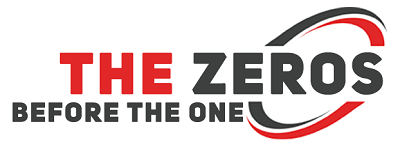Water is a precious resource, and it’s important to do your part to conserve it. But what steps can you take as a small business owner? In this guide, we’ll cover a range of ways that you can cut down on water usage in your workplace and save money on utility bills.
Use dry vacuum cleaners instead of wet vacuums.
When it comes to vacuuming, there are two main types of machines: wet vacuums and dry vacuums. Dry vacuum cleaners typically use less water than their wet counterparts, which means that you’ll spend less time emptying them out at the end of each cleaning session. This saves you time and money in maintenance costs—not to mention the more pleasant experience that your customers will have with a cleaner-looking floor.
It’s also worth noting that wet vacuums use more electricity than dry equivalents—a significant consideration if you’re tracking energy consumption as part of your environmental strategy.
Never leave taps running unnecessarily.
The first thing you can do to save water is turn off your taps. This simple step requires little effort but has a huge impact on your water bill.
Turning off taps can be as easy as turning the knob or handle until it stops, but it’s also possible to turn off your taps remotely from an app on your phone. This option allows you to shut off all the water in the building remotely if there is ever an emergency (like a fire), which will save time in case of an evacuation and prevent unnecessary waste of resources.
Fix any dripping taps as soon as possible.
A dripping tap can waste up to 300 liters of water a year. That’s equivalent to filling a bathtub and then emptying it out completely four times over. If you think this might be happening at your business, we recommend fixing it as soon as possible.
Fixing a leaking tap is often as simple as replacing washers or O-rings on the valve stems.
To determine whether or not you have a leaky tap:
- Turn off all taps in your office building, including kitchen and bathroom sinks. Let any existing water run down until it stops flowing freely on its own (about 15 minutes). This will ensure that there are no leaks from other sources which may mask the sound of running water from your business’s taps alone.
- Place an empty 2-L bottle under one sink or hosepipe connected to exterior building drains.
- Leave for several hours—or overnight—and listen for any noises coming from these pipes.
Train your staff on how to save water.
There are a few things you can do to help train your staff on water efficiency.
- Instruct them to turn off taps when they’re not in use.
- Make sure they know how much water is needed for each task, or have them keep an eye on their flow meter, so they know when it’s time to shut the tap down.
- Train them to fix any broken taps immediately and replace worn-out washers, if necessary. Broken taps waste hundreds of gallons of water per year!
- Teach employees about saving energy by only washing clothes when they are actually dirty rather than pre-treating stains before washing.
Install flush-free urinals, which can save up to one liter of water with each flush.
The next time you’re in need of a urinal, consider installing a flush-free urinal. These devices are much more efficient than conventional ones: they use less water, and the water that is used is cleaner. They’re also easier to maintain, which means less time spent cleaning. And because they do not require a flushing mechanism, they are cheaper to install.
Conclusion
We hope you found this guide useful. Remember that saving water doesn’t have to be difficult, and the benefits are great. Not only will you save money on your bills and reduce your carbon footprint, but it will also help your business become more attractive to customers. If you follow these steps, we’re sure that even if you haven’t taken action yet, there will be an opportunity for a change shortly. Get in touch with reliable platforms like Business Energy Comparison to ensure you get the best water rates for your business.













